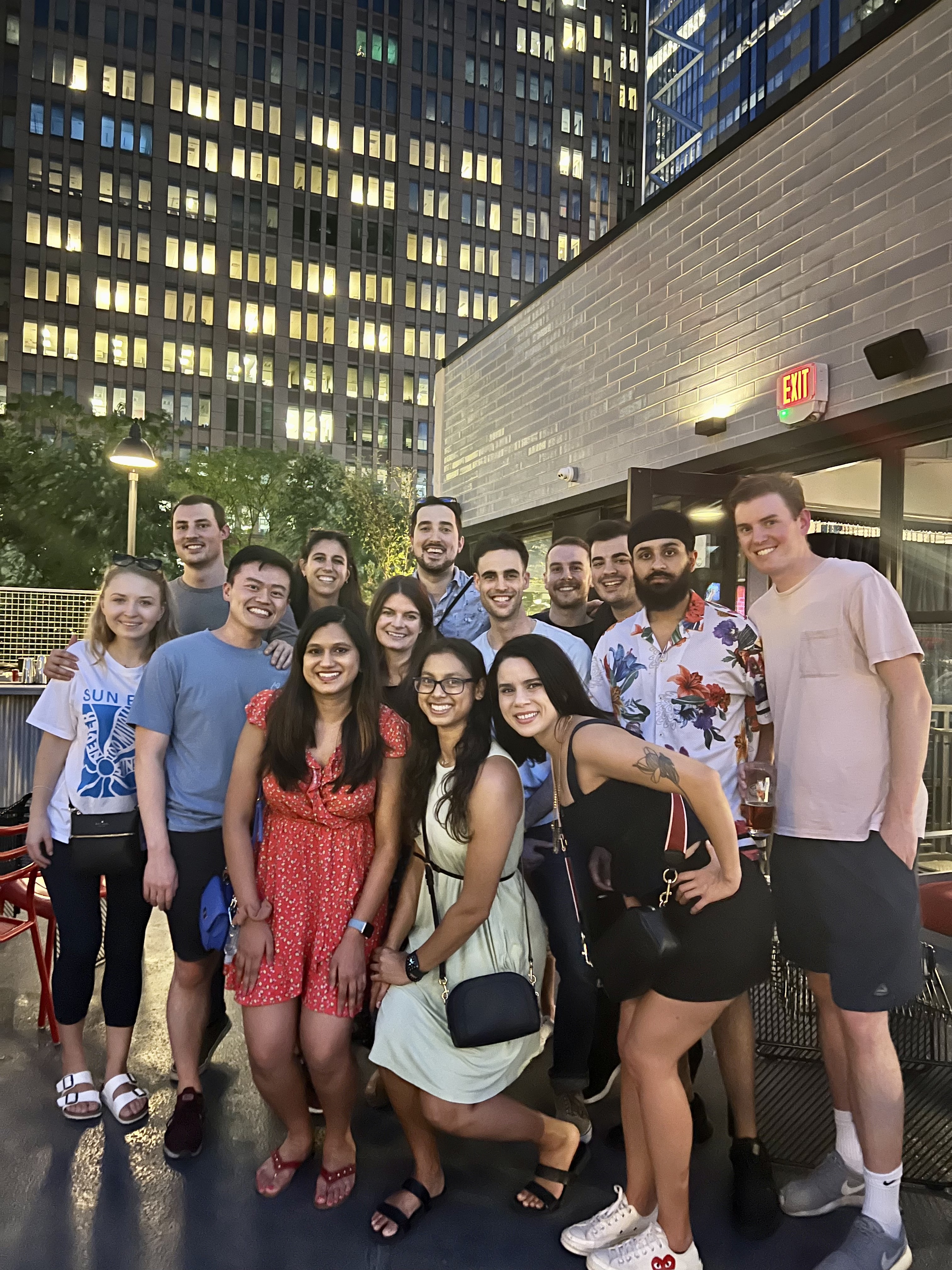Wellness
Wellness
At Cooper IM, we make wellness for residents a priority. This is evident not only in the variety of events we have for our residents both at work and outside of work, but more importantly ingrained in our schedule and in our culture. Our residency training is challenging and our residents take pride in hard work, but we also love to have fun! We have a robust wellness committee of creative and compassionate residents that plan events for our Cooper IM family. See below for some of the many ways our program prioritizes wellness and check out our resident run Instagram account, @CooperIM, for more photos.
- Scheduling- One of the most important pillars of wellness is having adequate time off! Our schedule design (4+2) guarantees residents have at least two full weekends off every four weeks, often more. This schedule is arranged in the traditional x+y residency format whereby “x” weeks represent inpatient time and “y” weeks represent dedicated ambulatory or elective. On the “x” weeks that involve essential service, residents almost always have either Saturday or Sunday off. On the “y” weeks, residents have the whole weekend off. When making the year’s schedule, residents have an opportunity to request certain weeks off for vacation that we try our best to accommodate.
- Wellness Committee & Budget - Our wellness committee started after the especially high demands of training during the COVID pandemic. Our wellness committee is now robust, very active and has an annual budget. Residents plan creative and diverse events that encourage quality time with each other and that explore the many avenues of wellness. These events include group workout class, trips to local events in Philadelphia or South Jersey, themed holiday meals, holiday party, cohort outings and noon conferences (discussed below).
- Wellness Noon Conferences - We have a robust curriculum for our noon lectures and sometimes those lectures involve wellness. This includes lectures on finance and managing money, sessions with counselors through Cooper’s Employee Assistance Program (EAP), pet therapy, locally catered lunches, baking competitions, cookie decorating, etc.
- Free Food! - “Free food” are some of the residents' favorite words! At our program, we try to have free lunch for residents twice per week. We also get a box of salads/ snacks each day for the long-call and night shift residents. GME also provides all residents with breakfast/snacks every other Wednesday in the resident lounge. Coffee is always available in the GME resident lounge for free.
- GME Sponsored Events - GME sponsors events inside and outside the hospital. This includes local events in our community, Thank-A-Resident breakfast, snacks in the resident lounge, etc.
- Wellness Half Days - In addition to the four weeks of vacation residents get per year, our residents also get Wellness Days. There are four half days (or two full days) residents can use when they are on elective, no questions asked! In addition, we have a wellness half day on every ambulatory week automatically built into our schedules. This allows time to attend doctor’s appointments, run errands, rest, etc.

- Cohort Outings - Cohort outings are some of our residents' best events outside of work. Since we have a x+y schedule, our ambulatory weeks are always with the same group of people, which are labeled as cohorts. Our program has six cohorts and residents become very close within their cohort. There are always fun events planned during each Cohort’s clinic week (often the Tuesday afternoon after didactic lectures) and these events have ranged from: restaurant week dinners, pumpkin picking, axe- throwing, escape-the-room, game nights, breweries, etc.
- Call Room + Resident Lounge- Wellness is having a safe space to chart, rest, and spend time with each other. Our newly renovated call room is one of our favorite places in the hospital and where we spend a lot of quality time together. We have ample windows to allow for natural lighting, a large refrigerator, microwave, ample computer space for residents to chart and a water cooler. We even decorate it seasonally, and it is currently full of photos from our recent social outings. In addition to having a bed to allow for some resting on night shifts in our call room, we also have access to private call rooms with a bed and computer space. Additionally, we also have access to the larger GME resident lounge where we have coffee, bimonthly snacks, massage chair, etc.

- Mental health resources - We have access to Carebridge through our EAP program at Cooper which gives us access to free therapy. See Carebridge page for more information.

- PGY1 & PGY2 retreats - We offer professional development retreats at the end of PGY1 and PGY2 year. These retreats are a full day dedicated to transitioning to new roles, leadership, fun games and spending time with each other and faculty.
- Program Leadership + Program Evaluation and Improvement Committee - Making wellness a priority is well supported by our program leadership. Our chief residents and faculty are always receptive to feedback on how to make our program better as it helps foster a supportive and collaborative environment for residents to train. We also have monthly Program Evaluation & Improvement Committee meetings which are open to all residents to make suggestions and design QI projects to improve our program. Through this committee, we also now have a quarterly newsletter written by residents and for residents.
